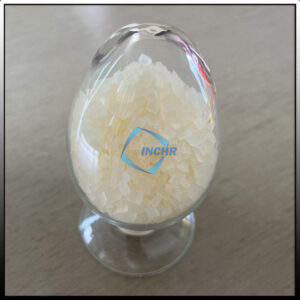Static electricity isn’t just a nuisance in plastic packaging – it’s a costly problem impacting safety, efficiency, and product quality. From dust-attracting films causing rejects to painful operator shocks and dangerous sparks in flammable environments, uncontrolled static disrupts operations. The engineered solution? Antistatic Masterbatch.
The Hidden Costs of Static Electricity
Static buildup occurs when plastic films or parts rub during processing, handling, or transport. Common consequences include:
Dust Contamination: Static attracts dust and debris, ruining product appearance (critical for medical, electronics, food packaging).
Operator Shocks: Unpleasant or hazardous shocks for workers handling films, bags, or parts.
Production Disruptions: Films clinging to machinery, misfeeds on printing/packaging lines, and sheet stacking issues.
Fire & Explosion Risk: Spark discharges pose severe risks in solvent-based printing or flammable powder handling (e.g., flour, chemicals).
Consumer Dissatisfaction: Dusty packaging or hard-to-open static-cling bags harm brand perception.
How Antistatic Masterbatch Works
Integrated directly into the polymer during extrusion or molding, Antistatic Masterbatch incorporates special additives (often fatty acid esters, ethoxylated amines, or glycerol monoesters). Here’s the science:
Migration: Additives migrate slowly to the plastic surface.
Moisture Absorption: These hydrophilic compounds attract trace environmental moisture.
Conductive Layer: The moisture creates a thin, invisible conductive layer.
Why Choose Masterbatch Over Other Solutions?
While topical sprays or coatings exist, Antistatic Masterbatch offers superior advantages:
Permanent & Consistent: Provides long-lasting, uniform protection throughout the bulk material.
Clean Processing: Eliminates messy, temporary sprays requiring reapplication.
No Surface Residue: Maintains film clarity and doesn’t interfere with printing or sealing.
Process Integrated: Easily dosed into standard extrusion or injection molding.
Tailored Performance: Available in migratory (temporary) or permanent antistatic grades for specific needs.
Cost-Effective: Optimized dosing reduces waste versus surface treatments.
Key Applications & Benefits Of Antistatic Masterbatch
Antistatic Masterbatch is vital across industries:
Food Packaging: Prevents dust attraction on containers, films, and liners.
Electronics: Shields sensitive components from static damage during handling and shipping (ESD-safe packaging).
Medical & Pharma: Ensures sterile packaging remains contamination-free.
Industrial Bags: Safely handles flammable powders, chemicals, and grains.
Consumer Goods: Improves appearance and usability of bottles, housewares, and retail packaging.
Benefits You Gain:
Reduced Rejects & Waste: Eliminate dust-related quality issues.
Enhanced Safety: Prevent shocks and sparks in hazardous areas.
Increased Productivity: Minimize machine downtime and film handling problems.
Improved Printability & Sealability: Maintain pristine surface properties.
Superior Product Quality: Deliver clean, functional packaging every time.
Selecting the Right Antistatic Masterbatch
Effectiveness depends on choosing the correct type and dosage. Consider:
Resin Compatibility: PE, PP, PET, PS – ensure compatibility.
Required Speed of Action: Migratory types take 24-72 hours; permanent additives work faster.
Environmental Conditions: Humidity levels impact migratory additive performance.
Regulatory Compliance: Food contact (FDA, EU), medical, or electronics standards.
Partner with your masterbatch supplier for expert guidance. They can recommend the optimal grade, dosage, and even develop custom antistatic solutions for challenging applications.
Conclusion: Eliminate Static, Elevate Performance
Antistatic Masterbatch provides a reliable, integrated, and cost-effective solution to dissipate charges, prevent contamination, enhance safety, and ensure smooth operations. For packaging that looks pristine, functions flawlessly, and meets stringent safety standards.





